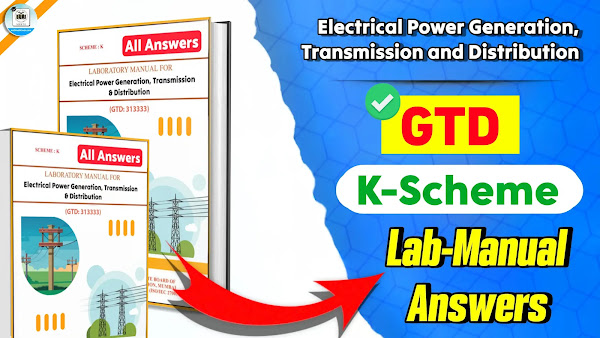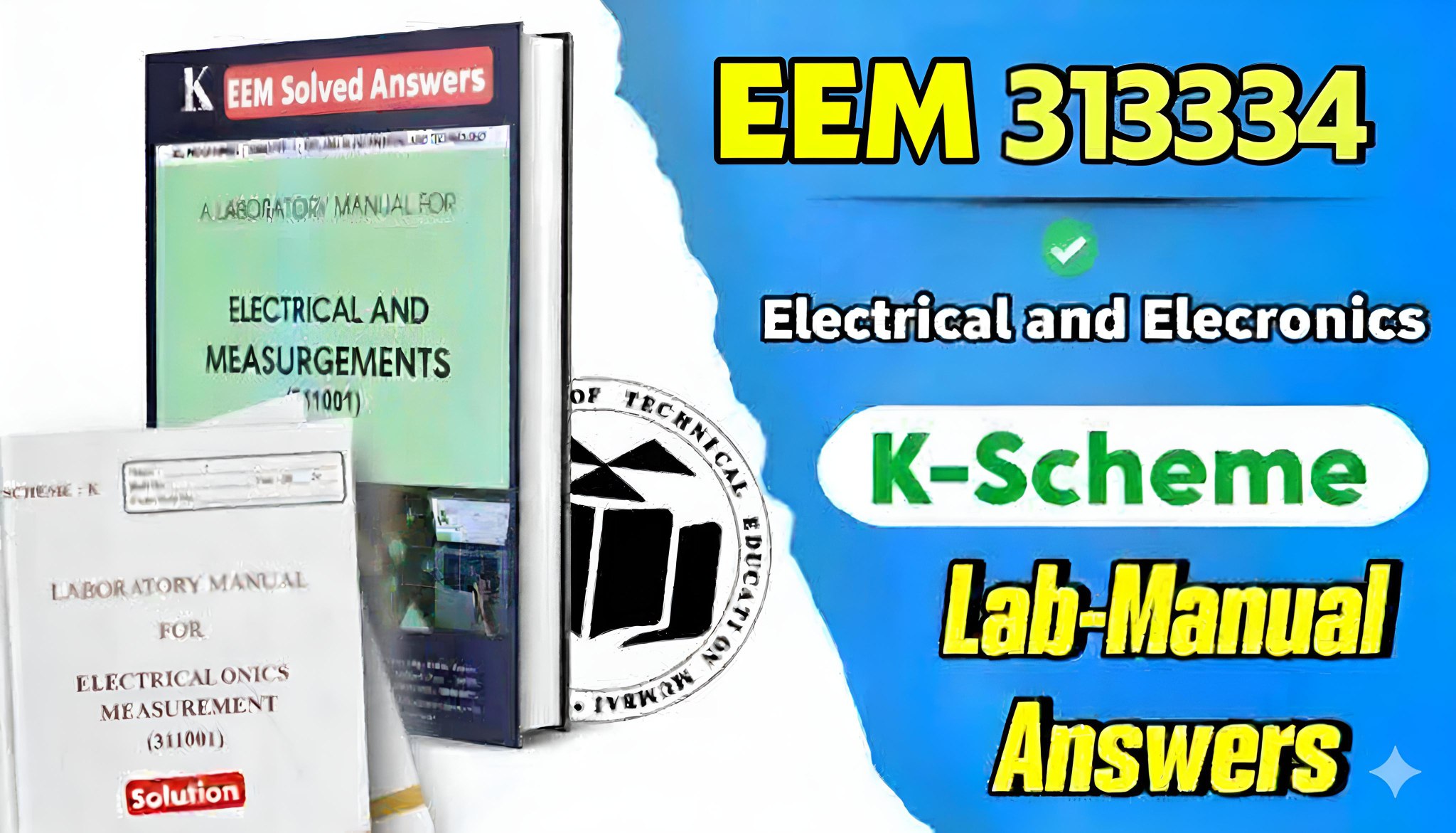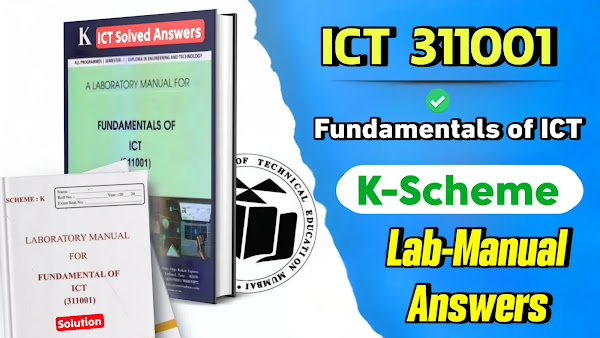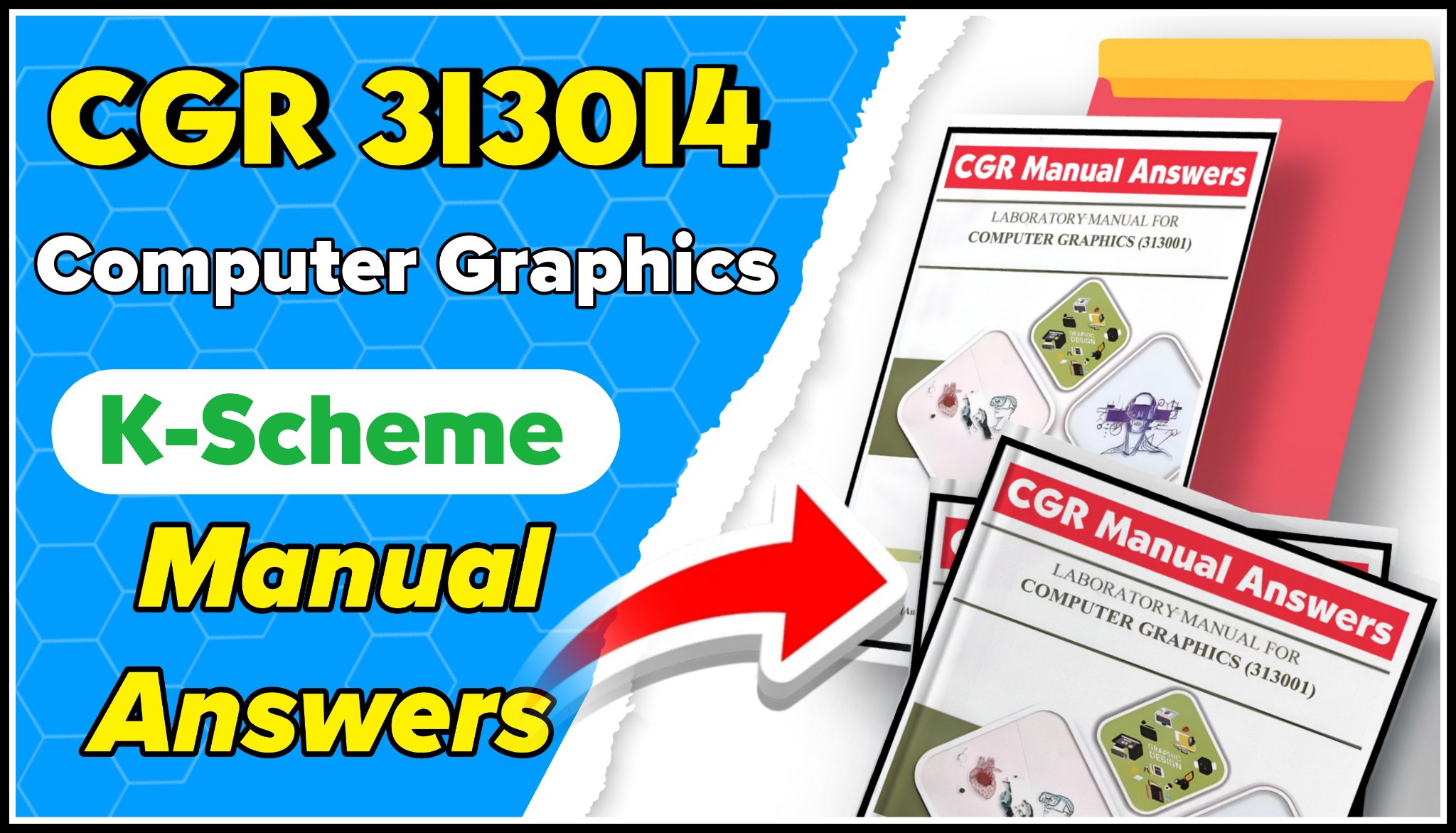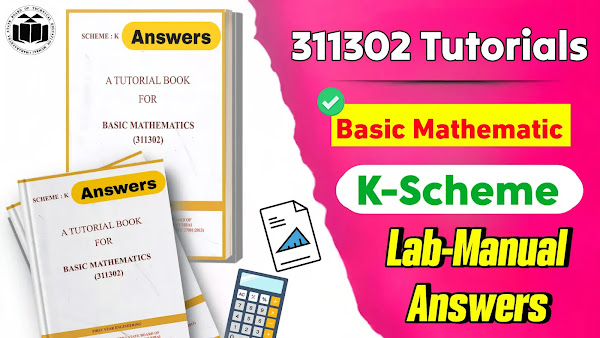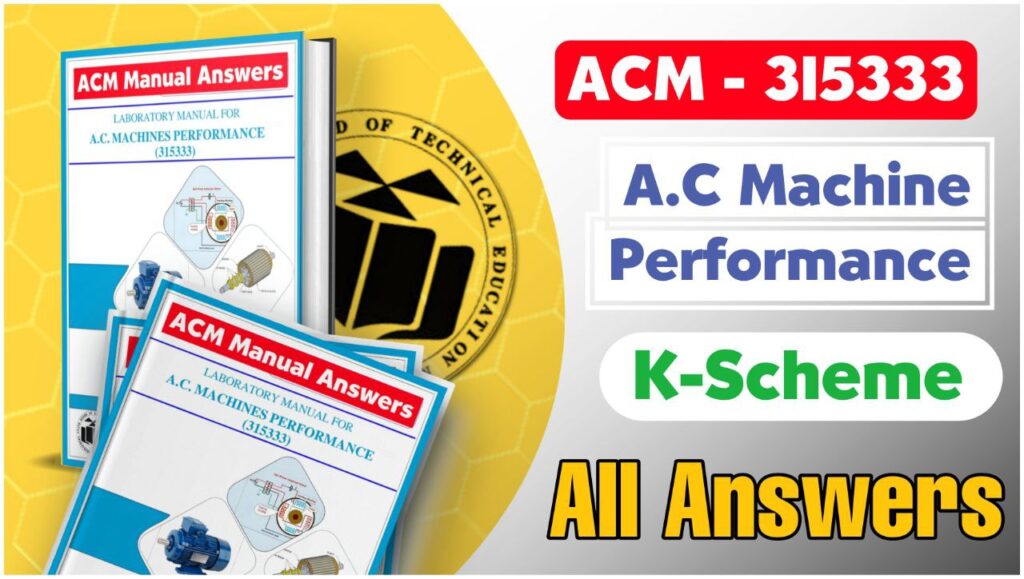
Are you an MSBTE Electrical Engineering student in the 5th semester, looking to easily understand and solve your A.C. Machines Performance (315333) manual? This guide is designed just for you. Here, you’ll find clear, step-by-step practical answers following the latest K-Scheme, so that you can complete your manual and prepare better for practicals and viva without feeling confused.
Why Study A.C. Machines Performance?
A.C. machines like induction motors and alternators are the backbone of modern industries and power systems. Learning about them helps you understand how big machines work in factories, transport, and power stations. From starting and controlling motors to testing alternators, this subject covers it all. You’ll not only score well but also get skills useful in jobs and real-world engineering.
What Will You Learn?
Practical No. 1
Identification of different parts of a three phase squirrel cage and slip ring induction motor, interpretation of the nameplate of three phase induction motor and reversal of the direction of rotationPractical No. 2
*Measurement of slip of a three-phase induction motor by:a) using Tachometer
b) using galvanometer
c) using stroboscope
Practical No. 3
*Brake test on three-phase induction motor. (Coming Soon)”Practical No. 4
Measurement of iron and copper losses through no-load and blocked rotor test on a three-phase induction motor and calculation of efficiencyPractical No. 5
Starting of a three-phase induction motor using (a) auto transformer (b) DOL starter (c) star-delta starterPractical No. 6
Speed control of a three-phase slip ring induction motor by varying rotor resistance.Practical No. 7
Starting and controlling the speed of a three-phase induction motor using variable frequency drive (VFD)Practical No. 8
Identification of different parts of a single phase induction motor and reversing the direction of rotation of a ceiling fan/ single phase induction motor/ universal motor.Practical No. 9
Operation of three phase alternator for variable frequency output by controlling speed of its prime mover (Coming Soon)Practical No. 10
Direct loading test of a three-phase alternator for determining voltage regulation with resistive, inductive, and capacitive loadsMSBTE All Clear Learn+Earn Program
Sell Your Practicals with us!
This subject teaches you about:
- 1. Different types of A.C. machines and their parts
- 2. How induction motors work, and how to test and control them
- 3. How single-phase motors are used in our homes and workplaces
- 4. Testing alternators and understanding how they generate electricity
- 5. Using special machines for particular applications
A.C. Machines Performance (315333) Semester V Manual Answers for Electrical Engineering Group 5th Semester by MSBTE All Clear Engineers Site
Practical List with Easy Answers
Let’s make each practical simple:
- Parts of Three Phase Induction Motors
- Learn to identify squirrel cage and slip ring motors, read the nameplate, and reverse the direction of rotation.
- Measuring Motor Slip
- Use tachometer, galvanometer, or stroboscope to check the difference between synchronous speed and rotor speed.
- Brake Test on Three Phase Induction Motor
- Find out how to measure output and calculate efficiency under real loading conditions.
- Iron and Copper Losses Test
- Perform no-load and blocked rotor tests to calculate different losses and total efficiency.
- Various Starting Methods
- Safely start a motor using DOL starter, star-delta starter, or auto-transformer.
- Speed Control with Rotor Resistance
- Control motor speed in slip ring induction motors by changing rotor resistance.
- Speed Control Using VFD
- Start and control the speed of induction motors using a Variable Frequency Drive (VFD).
- Single Phase Induction Motors and Ceiling Fans
- Identify core parts, and see how to reverse the rotation in common household motors.
- Alternator with Variable Frequency Output
- Control the speed of generator’s prime mover and observe its effect on frequency.
- Direct Loading Test on Alternator
- Test voltage regulation of an alternator with different load types (resistive, inductive, capacitive).
- OC and SC Tests on Alternator
- Perform open and short circuit tests to determine efficiency and voltage regulation.
- Stepper Motor Speed Control
- Learn the basics of stepper motors used in modern automation, and control their speed.
How to Write Answers Like a Pro
- 1. Start every answer with the aim of the experiment.
- 2. Write the procedure step by step, using simple language. No need to use complicated words!
- 3. Where you do calculations, show each step clearly.
- 4. At the end, add what you observed and your conclusion in 2 to 3 lines.
- 5. If possible, make rough diagrams & even simple sketches help.
Tips to Score More
- 1. Read the manual and mark important steps before going to the lab.
- 2. Practice drawing neat circuit diagrams & this always impresses examiners.
- 3. During viva, don’t hesitate to ask teachers if you get stuck.
- 4. Relate practicals to real-life usage; for example, think about where you see big motors around you.
Final Words
With these easy manual answers, the A.C. Machines Performance subject should become simple and quick to complete. Keep practicing, stay regular in labs, and always try to link what you study with machines you see every day. That’s how MSBTE All Clear Engineers cracks the code for 5th semester practicals!
Use this guide, note important points, and you’re sure to succeed in your finals and practicals & Solution

